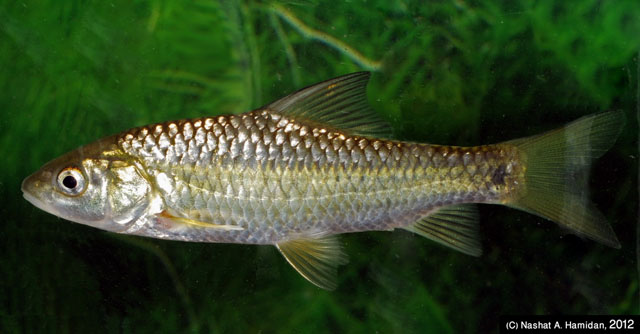| Cyprinidae (Minnows or carps), subfamily: Torinae |
| 45 cm TL (male/unsexed); 66 cm TL (female) |
|
benthopelagic; freshwater |
| Eurasia: streams and lakes of the Jordan River basin (Ref. 11028, 94477) and coastal rivers of the Mediterranean Sea in Israel (Ref. 94477). Introduced in Azraq Oasis in Jordan, but this population may have disappeared due to drought (Ref 94477). |
|
Dorsal spines (total): 4-4; Dorsal soft rays (total): 9-10. Diagnosis: D IV, 9-10; A 2-3/6; lateral line scales (29) 30-33; circumpeduncular scales 12 or 14. Upper profile convex, lower one almost straight; Body depth 24.5-29.8 % of SL. Snout narrowed anteriorly, sometimes almost pointed; in large-sized specimens it is about twice the length of the eye diameter. Lower lip smooth and without median lobe. The anterior pair of barbels is absent in most specimens, may be present but rudimentary (Ref. 57642). |
| Lives in small and wide streams and in lakes and ponds. Feeds on invertebrates and small fish. Spawns in June to September in shallow water over gravel. |
|
Near Threatened (NT); Date assessed: 20 February 2013 Ref. (130435)
|
| harmless |
Source and more info: www.fishbase.org. For personal, classroom, and other internal use only. Not for publication.

